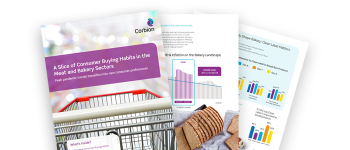Eating meat is the norm in 2022, with 74% of the population describing themselves as meat-eaters, according to the 17th annual Power of Meat report from FMI-The Food Industry Association and The North American Meat Institute (NAMI). While supermarkets remain the primary outlet for meat and poultry purchases, club stores and supercenters are becoming more popular as a primary destination. With all these channels, online shopping—for delivery or pickup—is growing, and with online shopping of perishable products comes an array of quality, shelf life and safety hurdles that need to be addressed by processors to ensure a satisfied customer.
Online meat purchases include everything from fresh, frozen or, fully cooked, as well as value-added. Processors are smart to take extra steps to manage the additional points of temperature abuse that online-purchased meat and poultry may encounter.
“Among the 46% of meat shoppers who purchase groceries online with some level of regularity, 75% have ordered meat or poultry for delivery or pickup, outside of having tried it once or twice,” said Anne-Marie Roerink, President, 210 Analytics LLC, San Antonio, Texas, and author of the study. “This equates to 35% of the meat-buying population at-large ordering meat online with some regularity. This is up from 14% in 2019 and up four percentage points from the previous year.”
Online meat shopping varies by type and cut, and above all, by who orders it. Most online purchases are from nearby stores for pickup (49%) or delivery (42%), according to the report. Delivery expectations are high with ninety-three percent of consumers expecting orders to arrive the same day and 53% want it within the hour.
“Gen Z online meat buyers are most likely to order anything they buy in-store online as well. Only 38% of Boomers do so,” said Roerink. “Examples of items being bought online less often are whole muscle cuts, such as steaks, roasts and ribs. If skipping an item online, 52% buy the items in person and 31% select something different, whether fresh or frozen.”
Megan Passman, Global Insights Manager at Corbion, said, “Online grocery shopping has seen significant growth in the past few years, fueled by the COVID-19 pandemic. Customers save on the cost of delivery while benefiting from the speed, convenience and safety of selecting a pickup time based on their schedule and at their desired location.”
Some of the hesitations by older consumers regarding online purchasing of meat include the inability to indicate desired protein specifications, lack of trust in the shopper and no shelf life guarantee, according to the study. Rightfully so, as there’s no guarantee that temperature abuse will not occur with the added contact points introduced by online shopping.
“When consumers are shopping online via pickup or delivery, their protein items are subject to some level of temperature abuse,” said Rob Ames, Director of Business Development-Meats. “Corbion’s proprietary Listeria Control Model can be a useful tool in determining food safety. Formulators would be wise to use the model in consideration of extra, in-home product protection in a temperature abuse scenario.”
Garrett McCoy, Senior Manager, Research and Development, said, “Anytime that temperature abuse occurs, food safety becomes a huge concern. The best way to ensure a more safe end product is to include antimicrobials such as Verdad® Vinegars and Verdad® Ferments to increase food safety with a consumer-friendly label.”
With online shopping here to stay, meat and poultry processors will want to protect their brand by protecting their product from fluctuations in holding temperatures experienced from pick-up and delivery.


